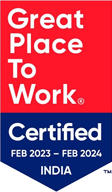The ISO 9000 family addresses various aspects of quality management and contains some of ISO’s best known standards. The standards provide guidance and tools for companies and organizations to ensure that their products and services consistently meet customers’ requirements, and that quality is consistently improved.
ISO 9001 is a standard that sets out the requirements for a quality management system. Pertaining to the need to renew the standards every five years, version ISO 9001:2008 Quality Management System was recently revised in September 2015 to ISO 9001:2015.
ISO 9001:2015
The new standard is based on a number of quality management principles including a strong customer focus, the motivation and implication of top management, the process approach and continual improvement. The ISO 9001:2015 certification assures customers that they get consistent, good quality products and services, which in turn brings many business benefits to the respective organization.
The seven quality management principles of ISO 9001: 2015 are:
Customer focus: The primary focus of quality management is to meet customer requirements and to strive to exceed customer expectations.
Leadership: Leaders at all levels establish unity of purpose and direction and create conditions in which people are engaged in achieving the organization’s quality objectives.
Engagement of people: Competent, empowered and engaged people at all levels throughout the organization are essential to enhance its capability to create and deliver value.
Process approach: Consistent and predictable results are achieved more effectively and efficiently when activities are understood and managed as interrelated processes that function as a coherent system.
Improvement: Successful organizations have an ongoing focus on improvement.
Evidence-based decision making: Decisions based on the analysis and evaluation of data and information are more likely to produce desired results.
Relationship management: For sustained success, an organization manages its relationships with interested parties, such as suppliers.
How is the Standard Structured?
• Clause 0 -3 – Introduction and scope of the standard
• Clause 4 – Context of the organization
• Clause 5 – Leadership
• Clause 6 – Planning
• Clause 7 – Support
• Clause 8 – Operation
• Clause 9 – Performance evaluation
• Clause 10 – Improvement
What are the Improvements in ISO 9001:2015?
Greater focus on customer: ISO 9001:2015 looks beyond a contractual customer. It takes in to consideration interested parties such as end users, consumers, regulatory bodies and more. Focus is always on achieving conformity of products and services to meet customer needs and expectations.
Structure: ISO 9001:2015 follows the same overall structure as other ISO management system standards (High-Level Structure), making it easier for all using multiple management systems.
Process approach: Process approach is an important part of ISO 9001:2015. It includes managing processes using Plan – Do – Check – Act and managing the interaction between the processes as a system, also using Plan – Do – Check – Act.
Focus on risk-based thinking: This has always been a part of the standard, but the new version gives it increased prominence.
How to Get Started?
•Assess the overall context of your organization to define who is affected by your work, including the internal and external interested parties, and what they expect from you (their needs and expectations). This will enable you to clearly state your objectives and identify new business opportunities. The scope of the quality management system needs to be defined based on the interested parties, internal and external issues as well as the products and services of the organization.
•Identify and address the risks associated with your organization.
•Ensure the commitment by the leaders for the continual improvement of the QMS.
•Work in a more efficient way as all your processes will be aligned and understood by everyone in the business or organization and roles, responsibilities and authorities are clearly defined. This increases productivity and efficiency, bringing internal costs down.
•Put your customers first, making sure you consistently meet their needs and exceed their expectations. This can lead to long-term relationships with customers, new clients and increased business for your organization.
•Organizations need to plan, implement and control the processes to meet the requirements for the products and services.
•Ensure the control of externally provided processes, products and services.
•Evaluate the performance and effectiveness of the QMS and continually improve the products and services offered.
ThinkPalm’s Relentless Pursuit for Quality
ThinkPalm, right from its inception, has fostered a quality-centric culture, by encouraging each employee to be accountable for the quality of the products and services delivered. We have stayed deep-rooted in our quality policy that states
“We are committed to delight our customers and establish long term relationship by delivering products and services which meet or exceed their expectations. We strive to achieve the above by doing things right the first time, periodic review of the processes, analyzing customer feedback and ensuring continual improvements.”
As a recognition for our continuous pursuit for quality, we were certified as an ISO 9001: 2008 organization in our first year of operation itself. Deriving confidence from this achievement, we have successfully delivered numerous quality solutions on enterprise, mobility and telecom verticals. ThinkPalm has already started the process implementation based on the ISO 9001:2015 standard and will be embarking on the certification attainment process towards the end of 2016. Henceforth, continuously improving people and processes, and enhancing capabilities in advanced technology areas are the core focuses of ThinkPalm in the quality management arena.







